Dual Diagnosis In Older Adults
March 4, 2025
The Hidden Epidemic: Mental Health and Substance Use in Seniors

Understanding the Complexity of Dual Diagnosis in Older Adults
As the population ages, mental health and substance use disorders increasingly intersect within the older adult demographic, presenting a significant challenge to health providers and caregivers. These dual diagnoses, which include conditions such as depression paired with alcohol misuse, require specialized approaches and heightened awareness to ensure effective treatment and support. This article delves into the intricacies of dual diagnosis among older adults, highlighting prevalence, risk factors, treatment complexities, and the vital role of improved healthcare strategies.
Prevalence and Risks Associated with Dual Diagnosis in Seniors
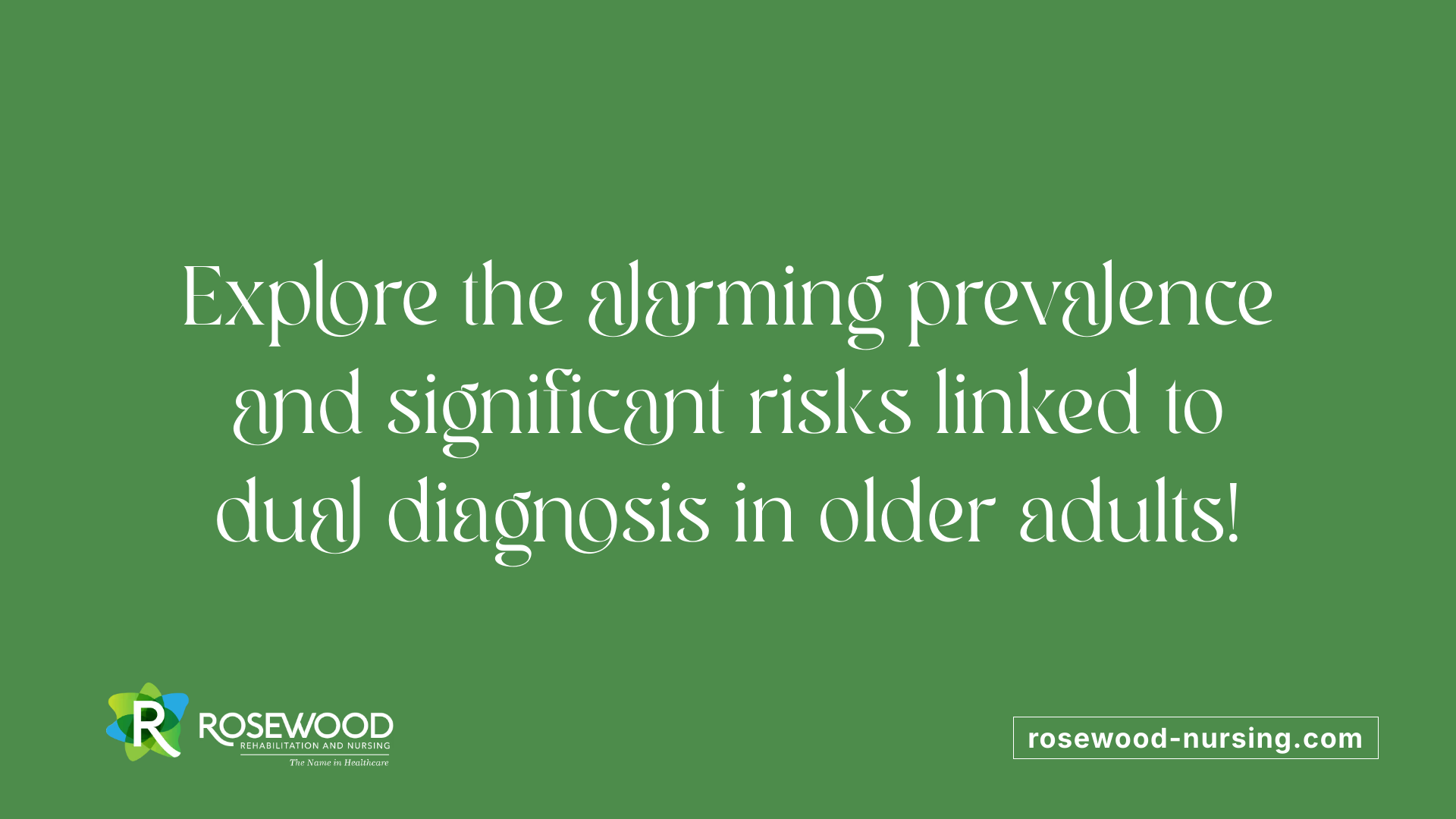
Prevalence of Dual Diagnosis Among Older Adults
Dual diagnosis, which refers to the coexistence of a mental health condition and a substance use disorder, is a significant issue among older adults. Research indicates that 37.6% of older adults discharged from psychiatric hospitals possess both a psychiatric disorder and a substance abuse disorder. Interestingly, while the overall prevalence of dual diagnosis is lower in this age group (6.9%) compared to younger individuals (26.7%), the impact on those who do experience it is considerable.
Implications of Substance Use and Mental Health Disorders
Older adults with dual diagnosis face considerable risks. According to the findings:
- Increased Suicide Risk: 17.7% of older adults with dual diagnosis attempted suicide prior to hospitalization, compared to only 3.3% among those with a singular mental health diagnosis.
- Higher Rates of Severe Illness: Those with both mental health and substance use disorders often experience severe illnesses and are at a higher risk of relapse. Reports suggest that nearly half of individuals with a mental health issue may also have a substance use problem, as substances are frequently misused as a coping mechanism.
- Complex Treatment Needs: The complexity of treating individuals with dual diagnoses arises from overlapping symptoms, possible interactions between multiple medications, and the stigma surrounding substance abuse.
- Physical Health Challenges: Patients may also encounter a greater likelihood of additional health issues, further complicating their care.
To effectively manage these dual diagnoses, integrated treatment approaches that address both mental health and substance use disorders simultaneously are essential.
Identifying Dual Diagnosis in Older Adults
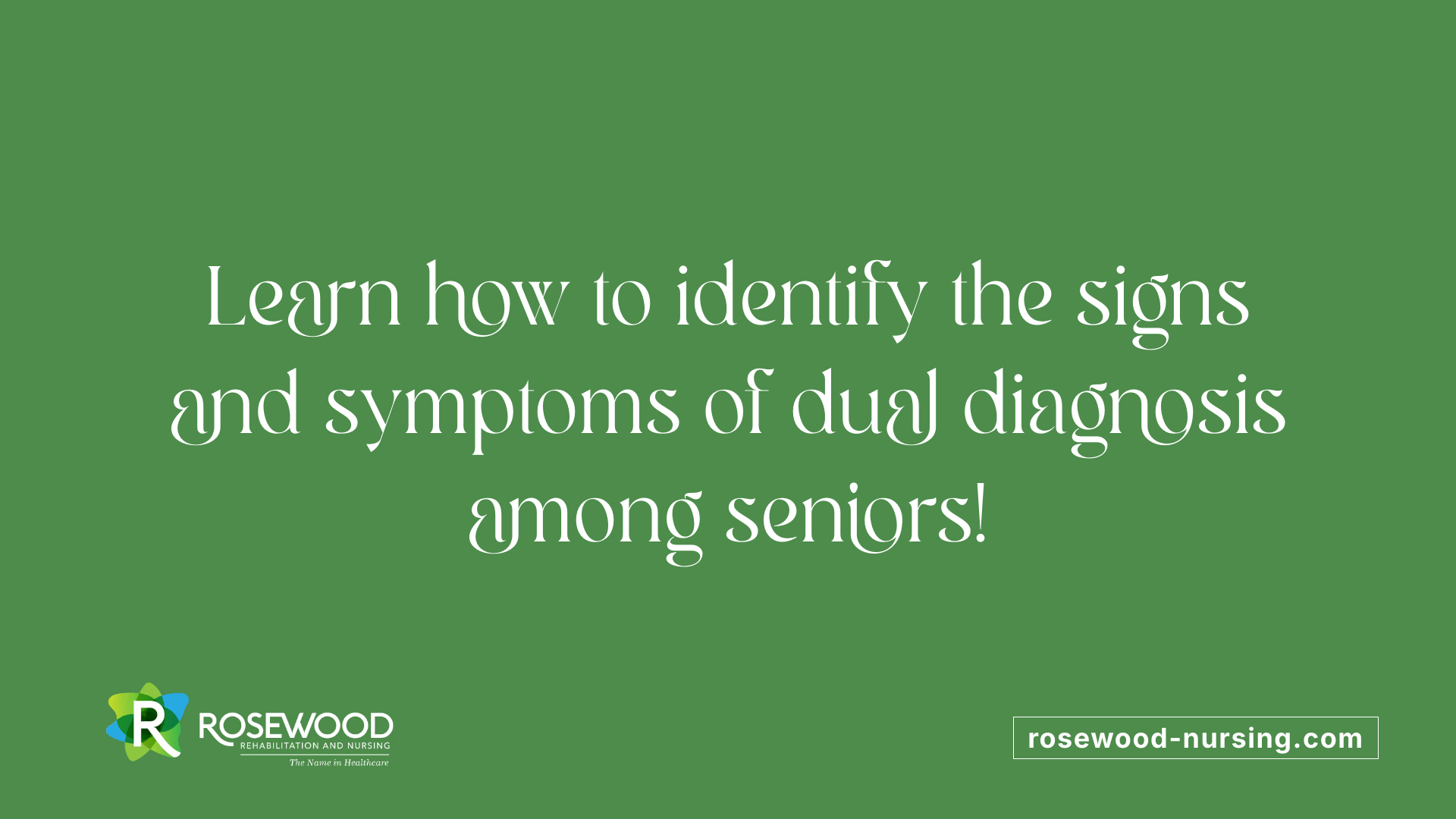
Signs and symptoms of dual diagnosis
Identifying dual diagnosis in older adults requires understanding the signs and symptoms that often manifest when a mental health disorder coexists with substance use disorders. Common symptoms include:
- Mood changes: Fluctuations in mood, such as increased irritability or sadness.
- Social withdrawal: Individuals may isolate themselves, avoiding connection with friends and family.
- Neglect of personal hygiene: This can be a signal of declining mental health.
- Increased substance use: An uptick in alcohol consumption or the use of prescription drugs can indicate underlying issues needing attention.
An example of dual diagnosis in older adults is an individual who suffers from depression while also struggling with alcohol addiction. In such cases, the depression may lead the person to self-medicate with alcohol, exacerbating both conditions and leading to a cycle of worsening mental health and increased substance use.
Challenges in diagnosing dual diagnosis among older adults
Diagnosing dual diagnosis in older adults presents unique challenges. Many practitioners lack familiarity with the concept, leading to increased rates of under-diagnosis.
- Complex needs: Older adults often have multiple health issues that complicate the identification of co-occurring disorders.
- Symptom overlap: Many symptoms of mental health disorders, such as cognitive decline, can mimic signs of substance abuse.
- Stigma: Societal attitudes towards aging and substance use can hinder open conversations, further obscuring accurate assessment.
Effective diagnosis and targeted treatment are essential, yet research emphasizes significant gaps in needed services and screening practices for this demographic.
Depression and Anxiety: Common Mental Health Challenges
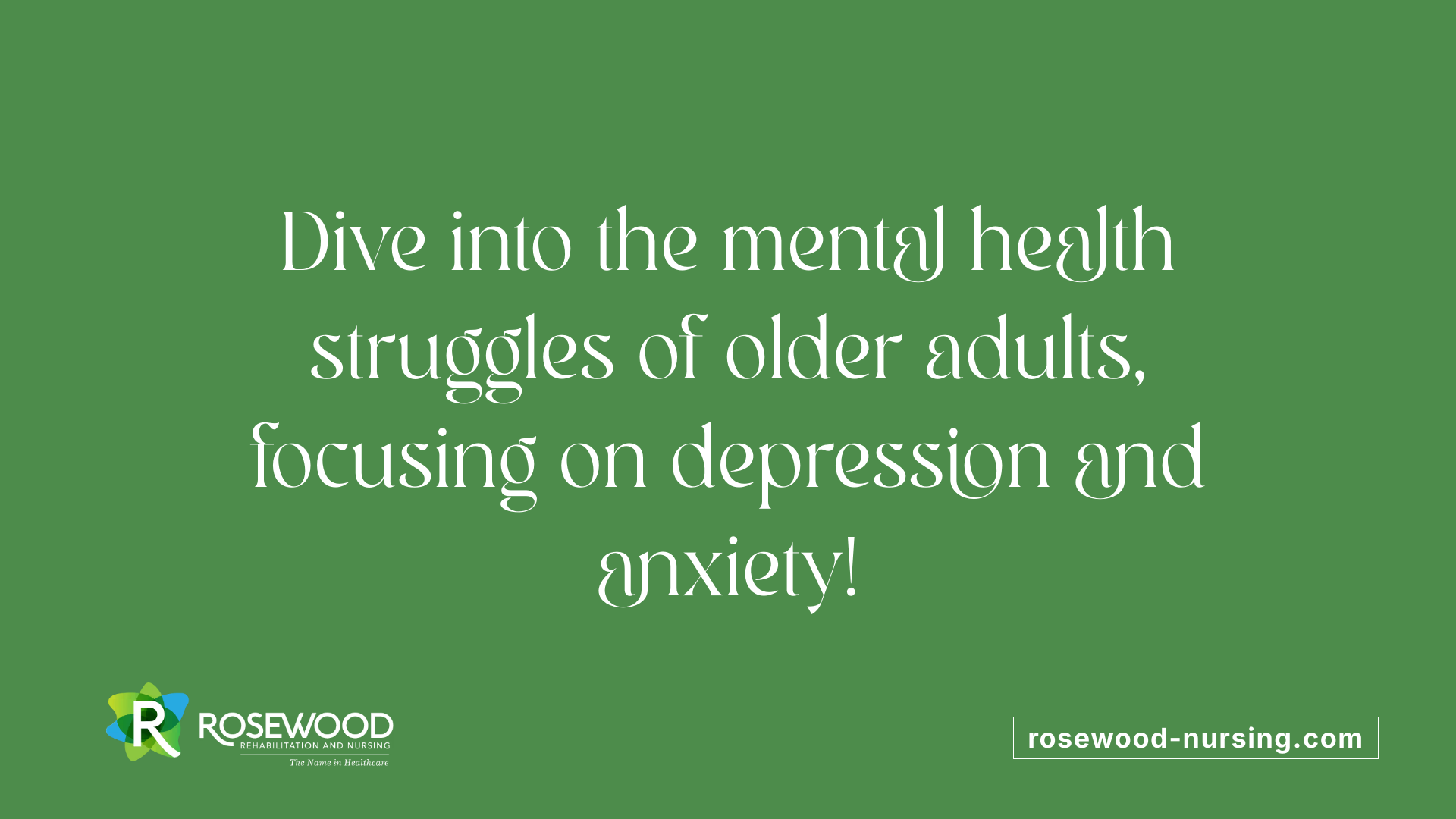
How prevalent is depression among older adults, and what are its implications?
Depression is a significant mental health concern among older adults, affecting approximately 20% of this demographic, with many individuals experiencing issues beyond normal aging. By 2030, it is expected that 15 million older adults in the U.S. will have psychiatric disorders, yet alarming statistics reveal that up to 63% of these individuals do not receive the necessary services.
The implications of untreated depression are severe. Cognitive decline, increased disability, and significantly higher suicide rates, particularly among older men, are just a few of the risks. Additionally, mental health problems are often under-diagnosed. Stigma surrounding mental health further complicates the issue, deterring many seniors from seeking help. Effective treatment, such as that provided by specialized Geriatric Psychiatry Clinics, is crucial for enhancing the quality of life and functionality of older adults facing depression and related challenges.
What are the signs and symptoms of anxiety in older adults?
Anxiety in older adults can present through various signs including excessive worry, avoidance of routine activities, and fear of social interactions. Physically, symptoms may manifest as a racing heart, shallow breathing, trembling, nausea, and sweating. The most common anxiety disorders in this population include Generalized Anxiety Disorder, Panic Disorder, and PTSD.
Common triggers for anxiety in older adults can range from stressful life events and substance use to genetic predisposition and existing medical conditions. Management strategies typically involve a combination of cognitive-behavioral therapy, medications, relaxation techniques, and fostering coping skills within supportive social networks. Addressing these areas can be vital in improving mental health outcomes in the aging population.
Tailoring Treatment Approaches for Older Adults
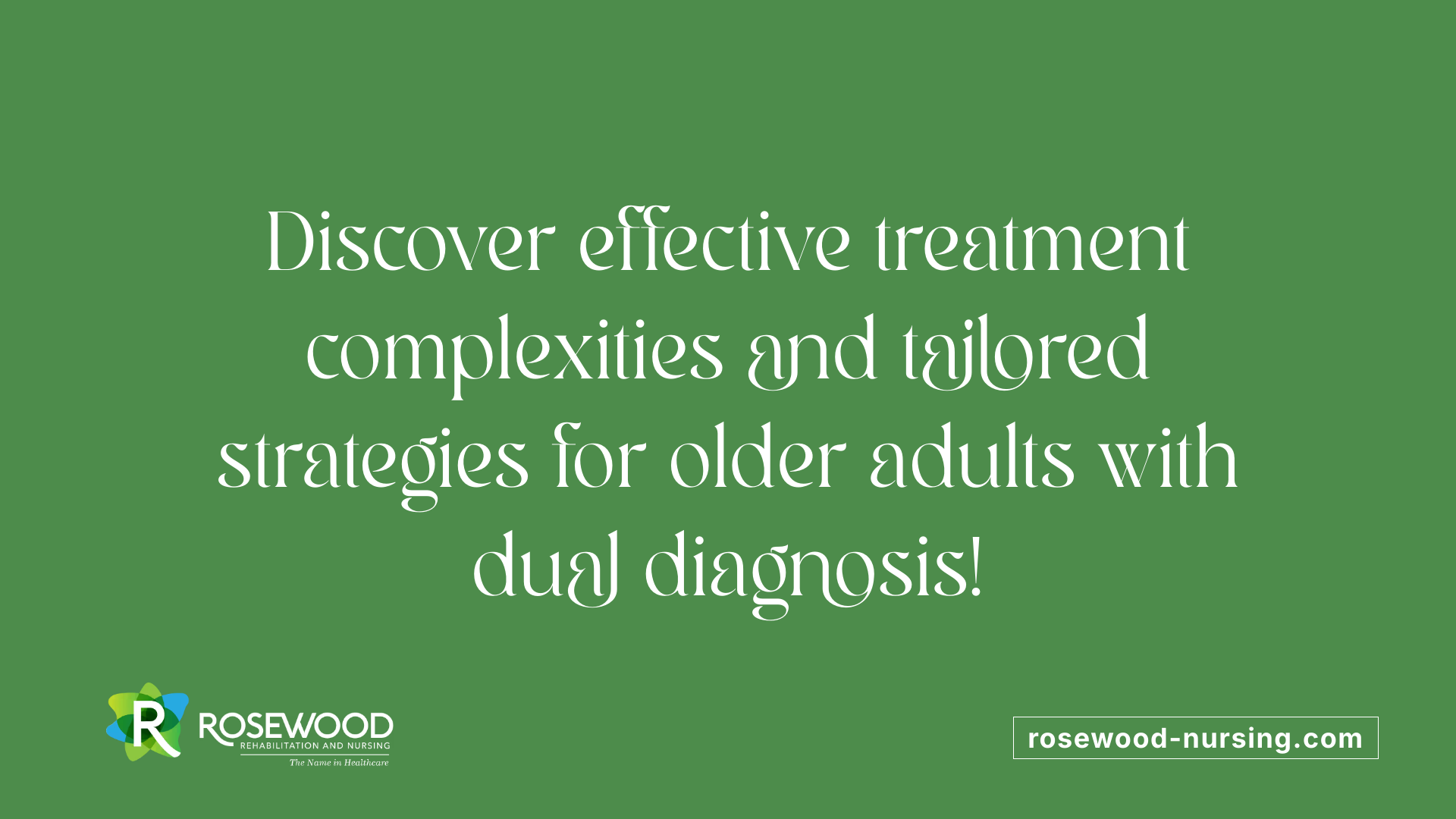
Treatment complexities and strategies for dual diagnosis
Older adults with dual diagnosis, which features both a mental health disorder and a substance use disorder (SUD), confront numerous treatment complexities. These individuals often have higher rates of medical comorbidity, making their care more challenging. Factors like age-related cognitive decline, mobility issues, and prior traumatic experiences contribute to a unique set of needs.
To address these complexities, treatment strategies should be tailored specifically for seniors. Personalized integrated psychiatric evaluations can set a solid foundation for developing effective care plans. Inpatient facilities are preferred for initial treatment as they provide manageable environments during detoxification, particularly because older adults may experience severe withdrawal symptoms. Active participation from family members can enhance therapeutic processes and bolster recovery.
Suitability of existing therapies for older adults
Existing treatment protocols, often designed for younger populations, might not suit the older demographic effectively. Therapies such as group treatment may not yield favorable results, while individual approaches are often more beneficial. For example, creative arts therapy has shown promising results, capturing the engagement of older patients and enhancing their emotional expression.
Further research is necessary to refine these approaches, ensuring that they not only address dual diagnosis complexities but also promote optimal mental health outcomes for older adults.
Addressing Service Gaps and Enhancing Support Systems
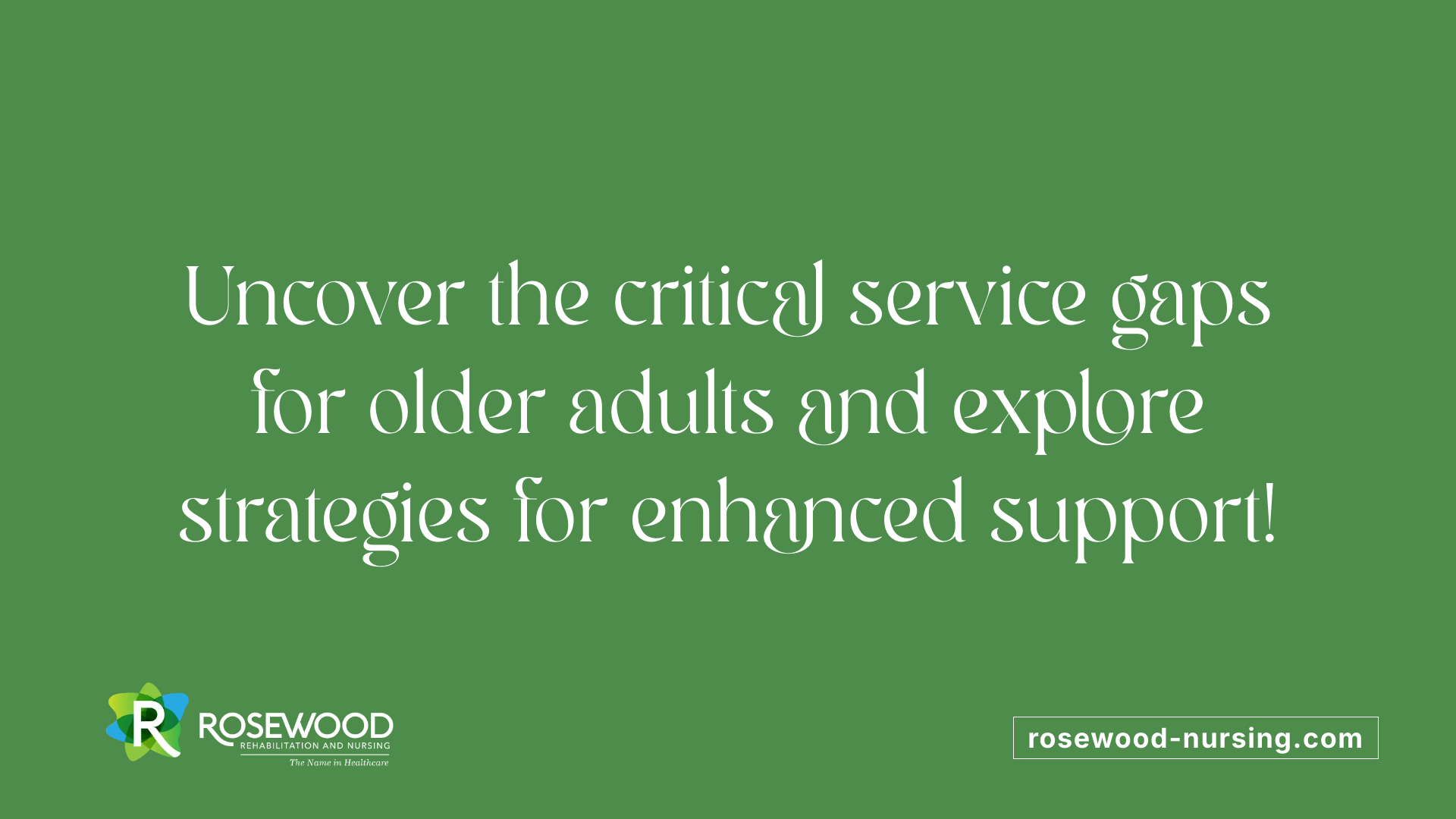
Service gaps in mental health for older adults
A significant challenge in addressing the mental health needs of older adults is the persistent gap in services tailored specifically for this demographic. Despite the increasing recognition of dual diagnosis among older individuals, the representation of this population in research remains minimal. Many older adults experience under-diagnosis, especially when it comes to co-occurring substance use disorders and mental health conditions.
Potential strategies for improved care
To enhance care for older adults, implementing better screening practices and integrated treatment models is crucial. Initiatives could include:
- Training healthcare providers: Educating them about the unique challenges faced by older adults can lead to better engagement and tailored treatment plans.
- Enhanced assessment tools: Developing specific screening tools for substance use and psychiatric disorders can facilitate early detection of dual diagnosis.
- Increased accessibility: Ensuring that facilities provide 24/7 assessments and the option for direct admissions can improve immediate supportive services for older patients in crisis.
Overall, cultivating a system that understands and addresses the complexities of dual diagnosis in older adults will contribute to better health outcomes and improved quality of life.
Meeting the Needs of a Growing Demographic
The increasing prevalence of dual diagnosis among older adults necessitates a comprehensive approach to treatment and care. By recognizing the specific challenges faced by this demographic, healthcare systems can implement targeted interventions and support strategies to improve outcomes and quality of life for older adults. It is crucial for policymakers, health professionals, and caregivers to remain vigilant and proactive, closing the service gaps and fostering an environment where seniors can receive the care they deserve.
References
- DUAL DIAGNOSIS IN ELDERS DISCHARGED FROM A ...
- Understanding Dual Diagnosis in Older Adults - Silver Ridge Recovery
- Improving Care Provision to Older Adults with Dual Diagnosis
- What is a Dual Diagnosis Program for Seniors? - San Diego | API
- [PDF] the Pennsylvania Dual Diagnosis Direct Support Curriculum training ...
- Dual Diagnosis Program for Elderly | Inpatient Care - Anchor Hospital
- Older adult patients with both psychiatric and substance abuse ...
- [PDF] Dual Diagnosis in Older Adults
Similar articles

How to Choose the Right Short-Term Rehabilitation Facility

How to Support a Loved One During Their Short-Term Rehabilitation Stay

How Respite Care Supports Seniors with Chronic Conditions

How Respite Care Provides Social Engagement for Seniors

How to Transition from Hospital Care to Long-Term Care Smoothly

How Holistic Therapies Support Recovery in Short-Term Rehabilitation
Contact us today and experience ”The Name in Healthcare”
Where compassion, well-being, and a welcoming community converge to redefine your healthcare journey. Welcome to Rosewood, where your family becomes our family.














